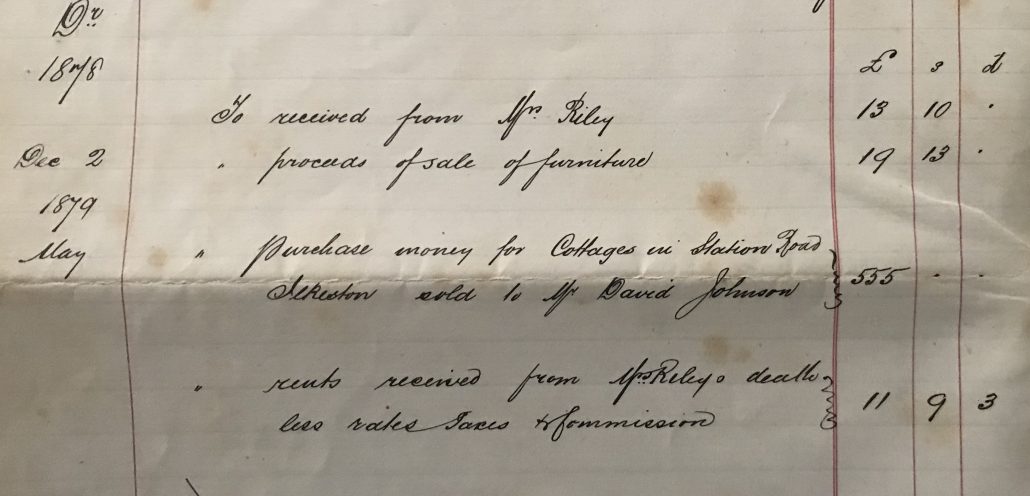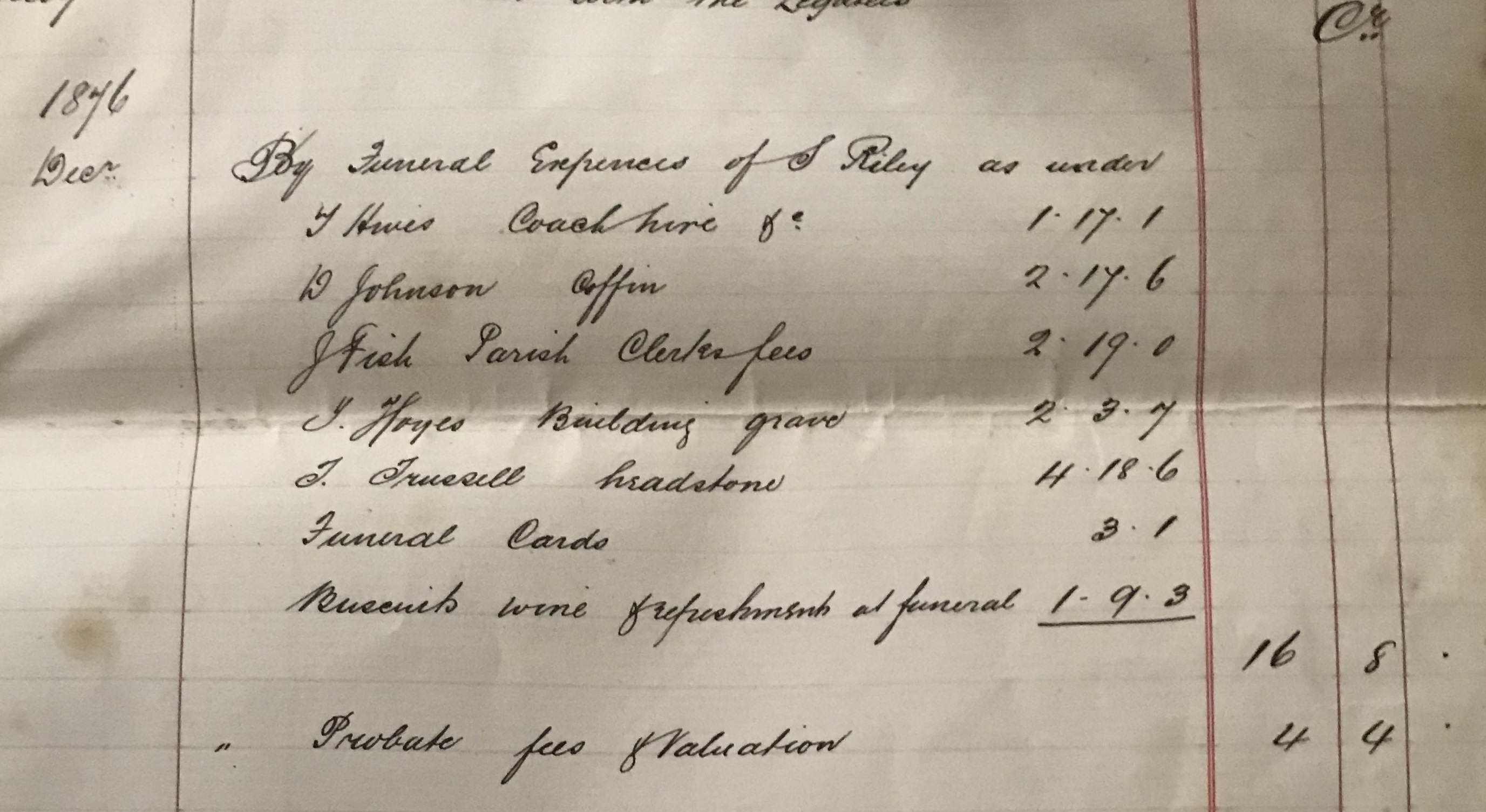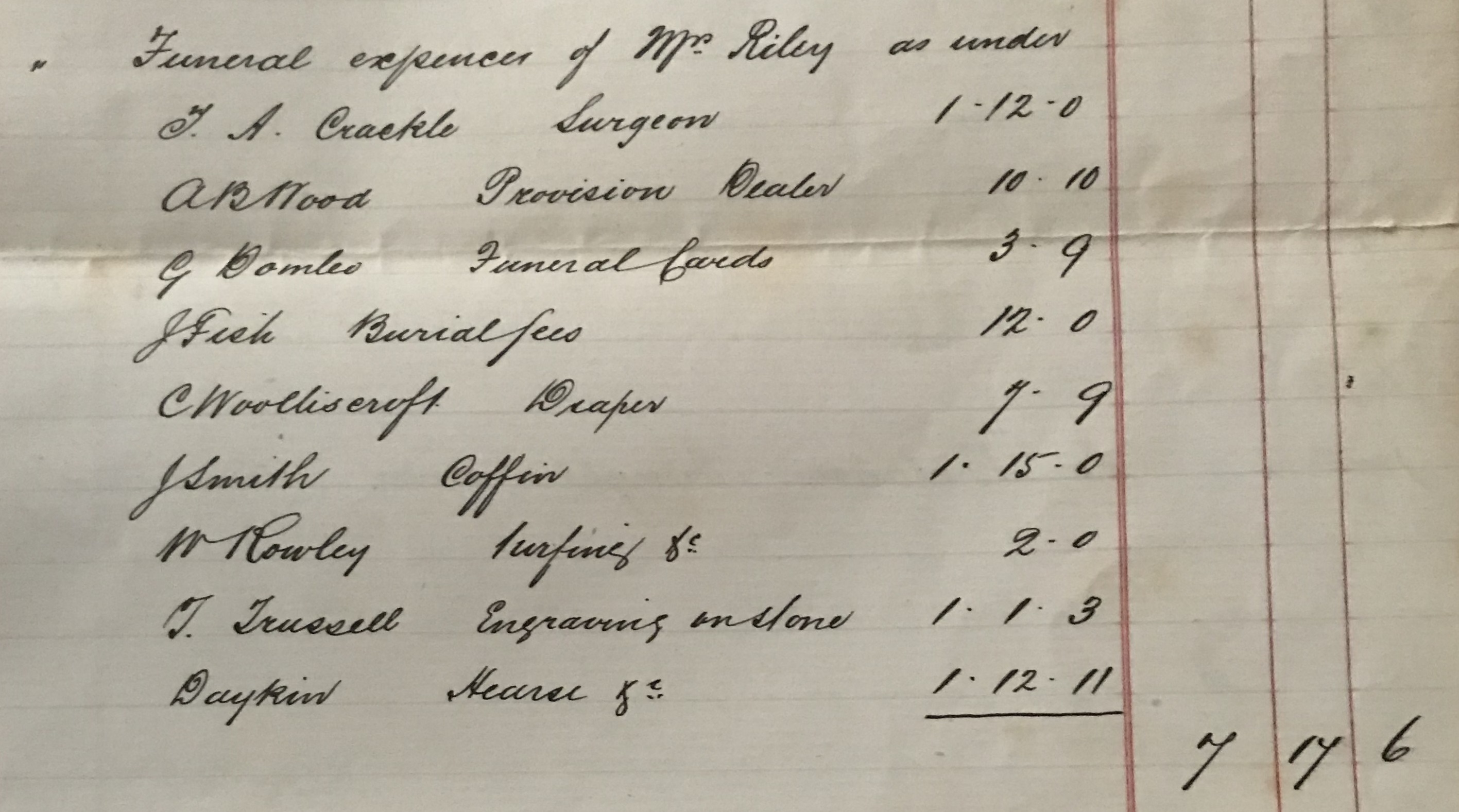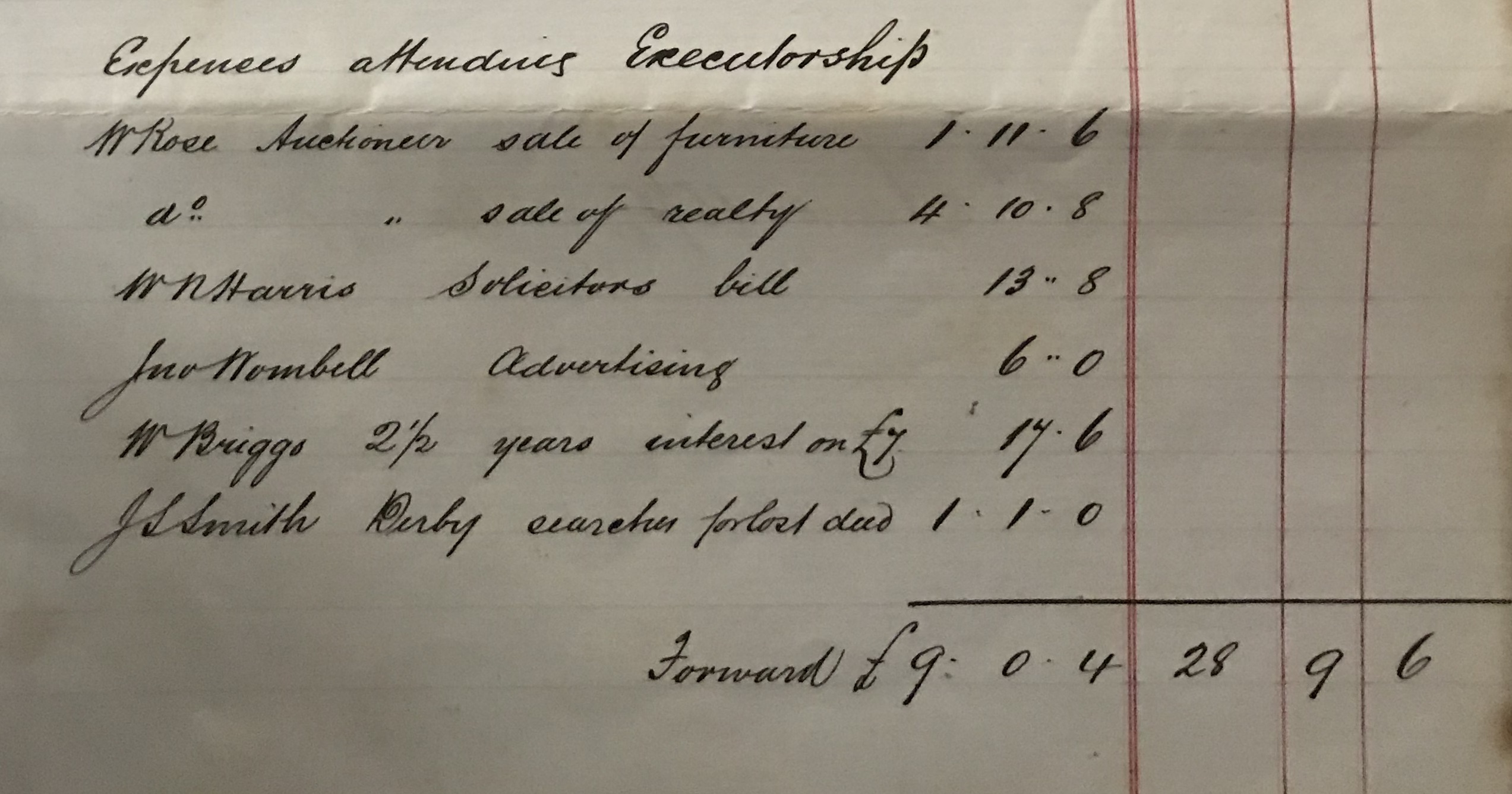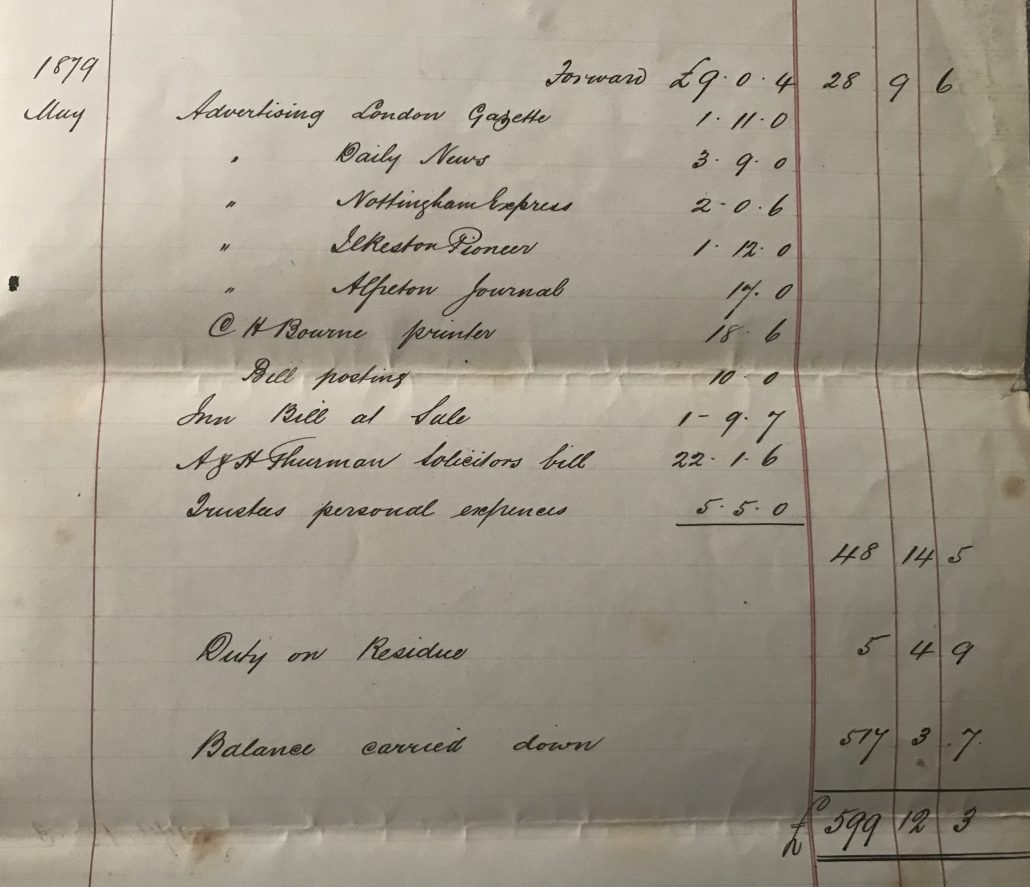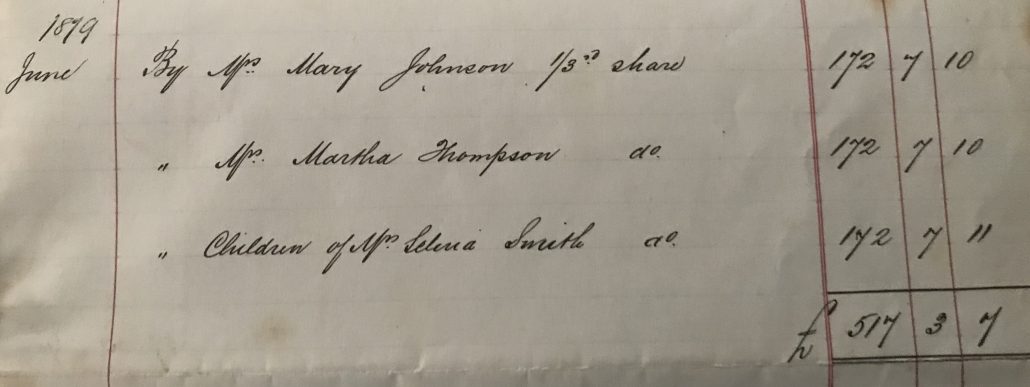This page has been compiled by Dave Johnson, but not the one who appears below !!!!
Samuel Riley, the grandfather of Arthur Reuben Johnson and the great-great grandfather of Leonard Henshaw, was baptised at St. Mary’s Church, Ilkeston, on November 5th 1815, the son of John and Jane (nee Walker).
Unlike his father who was a framework knitter, Samuel was, all his working life, a coal miner. He married Sarah Cockayne on March 7th 1836 at St. Mary’s Church, and then lived on Ilkeston Common, before moving into New Street, later called Station Road, in the late 1850’s.
Sarah died in New Street on May 31st 1862, aged 44, after giving birth to 14 children.
At the beginning of the following year Samuel married twice-widowed Esther Limb (nee Hatter) at Ilkeston Independent Chapel. He died on December 22nd 1876, aged 61, in what was, by then, Station Road. Now thrice-widowed Esther died two years later, aged 60.
You can read more about the ‘Riley clan‘ of Station Road elsewhere.
……………………………………………………………………………………………………………………………………………….
The Estate of Samuel Riley in 1879
On June 10th 1879 a Debit and Credit Account for the Estate of the late Samuel Riley was drawn up. On the left is the title page to that account.
It was signed, as correct, by his eldest child, Mary, and her husband David Johnson (below) and a copy was given to them.
These images are taken from that copy
……………………………………………………………………………………………………………………………………………………….
Basically, on the left hand side of the ledger (below) we see the items producing income for the estate. You will see that the account begins in 1878. The greatest income, of £555, came from the sale of Samuel Riley’s cottages in Station Road. These were situated at the Bath Steet end of the road, on its north side.
There were no futher items in this column and so the total came to £599 12s 3d.
…………………………………………………………………………………………………………………………..
Onto the right hand side of the account where the expenses of the estate are listed … and we see the names of several well-known Ilkeston tradesmen, some of them, also at the end of their lives.
Samuel was buried in the extension section of St. Mary’s graveyard on December 24th, 1876. Below we see the funeral expenses listed.
The coach hire was provided by ‘T Hives’ …. but Thomas Hives of the Rutland Arms/Hotel had died a month before Samuel (November 17th) and so, I presume, the coaches were provided by his widow, Mary, who was now the proprietor of the hotel.
Samuel’s son-in-law, David Johnson, built the coffin …. at cost ?
John Fish was the Parish Clerk and remained so until 1895.
The grave was ‘built’ by Thomas Hayes, a bricklayer who lived a couple of doors away from Samuel in New Street.
Thomas Trussell of Kensington was the stone engraver who provided Samuel’s headstone … In affectionate remembrance of Samuel Riley who died Dec 22nd 1876 aged 61 years (More was added later)
………………………………………………………………………………………………………………………………………….
The ledger then moves on to the funeral expenses of ‘Mrs Riley’ … that is, Esther, Samuel’s second wife, who died on November 18th 1878.
Surgeon Thomas Arthur Crackle had a short career in Ilkeston in the 1870’s and died, very young (aged 31), in 1880.
Alfred Burton Wood was the provision merchant of Bath Street who had taken over the family business from his very troubled brother Stephen Richardson Burton.
George Domleo was a stationer, a neighbour of baker Solomon Beardsley, trading in the 1870’s, at the Market Place end of Bath Street (west side)
John Fish was still the Parish Clerk of course.
Charles Woolliscroft was the draper trading from a large store at the southern corner of Wilton Place and Bath Street.
Joiner James Smith originated in Winchester, Hampshire, but when his first wife Jane (nee Payne) died in 1853, for some reason he came north to Ilkeston and married Cotmanhay-born widow Mary Hillen (nee Knighton) less than a year later. At the time of Esther Riley’s death, James and his wife lived in one of the Riley houses in Station Road. His step son-in-law was butcher William Tarlton who had a shop at the southern corner of New Street and Bath Street, just across the road from James Smith.
William Rowley was a gardener and greengrocer, a long-term resident of South Street, close to the Wesleyan Chapel there.
Thomas Trussell was the same stone engraver who served Samuel Riley and finished off the headstone inscription … also of Esther Riley who died Nov 18th 1878 aged 60 years. What is my strength that I should hope. Job VI 11.
‘Daykin’ who provided the hearse was probably cab proprietor Richard Birch Daykin of South Street.
……………………………………………………………………………………………………………………………………………..
There follows a list of general expenses which do not relate to either funeral specifically and these continue to the bottom of the foolscap page.
Auctioneer William Rose had premises at the top of Bath Street, close to the Harrow Inn.
The solicitor was Walter Noel Harris who had offices in Matlock, Derbyshire.
John Wombell had his print works in the Market Place and was responsible for printing the town’s main (and usually only) newspaper.
William Briggs, watch and clock maker of 89 Bath Street, was also insurance agent for ‘British Empire Mutual Life’ proving loans.
Accountant James Sadler Smith had offices in Friar Gate, Derby.
As you will see there is sub-total of £9 0s 4d which is carried over to the next foolscap sheet where there is a continuing list of general expenses.
………………………………………………………………………………………………………………………………………………..
Charles Henry Bourne was the printer with premises in the Market Place, and from 1876 the proprietor of Market Inn which was adjacent to his works ….. since 1873 C.H. had been married to the daughter of Jedediah Wigley, prroprietor of the Inn until his death in 1876.
Solicitors Abbott and Henry Thurman were brothers in partnership since the early 1870’s.
Elder brother Abbott held several positions of responsibility in Alfreton, Heanor and Ilkeston but about 1880 was struck down with paralysis, forcing him into ‘retirement’ at his home — the Pines, Stanton Road — where he died in February 1881, aged 37.
These total expenses were then deducted from the previous income total of £599 12s 3d to produce a ‘profit’ of £517 3s 7d. —- a worth of about £62,000 today (2020).
………………………………………………………………………………………………………………………………………..
Although Samuel and Sarah Riley had 14 children, only the two oldest were alive when the proceeds of the estate were distributed in June 1879.
Thus, the ‘profit’ of £517 3s 7d was divided between the two sisters Mary and Martha, and the children of the other, deceased sister, Selina. She was the only deceased child to have children.
Born on August 1st 1836 Mary was the oldest child and had married David Johnson.
Martha Riley, born September 17th 1838, married potter Edmund George Harrison on August 24th 1857, at Christ Church, Cotmanhay. However George was killed in a gun accident in November 1861, aged just 25, leaving Martha with two children.
Just over two years later, on Christmas Eve 1863, Martha married twice-widowered labourer Jesse Thompson. They had at least ten children.
The third sister was Selina, born December 23rd 1840, who had married lacemaker Herbert Smith on September 9th 1861. However Selina died on April 16th, 1878, between the deaths of her father and her step-mother. Thus a third of the estate was to be distributed between Selina’s six children, who, at that time, were aged between seven and 18 years.
The document was signed as correct by David and Mary Johnson.
——————————————————————————————————————————–
Now we walk on down Station Road, to examine one of Ilkeston’s two Henry Carrier, and may catch a glimpse of another ‘Johnson’




